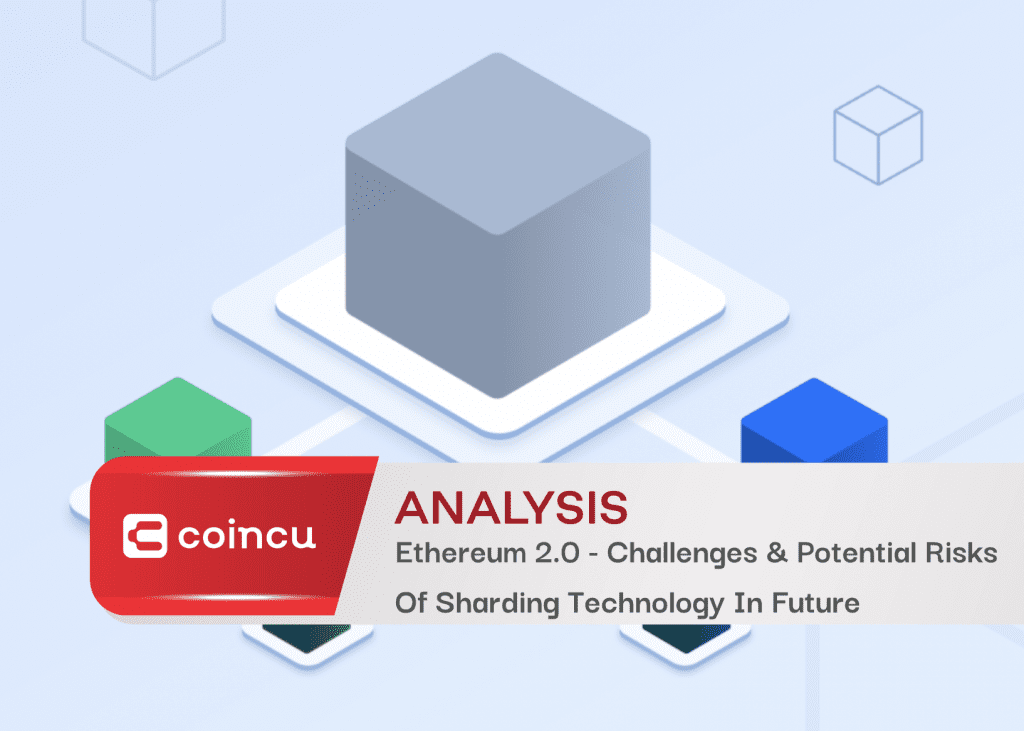What is Sharding? What problem does sharding technology help with Blockchain? What are the challenges & risks of using Sharding?
Sharding is widely praised as a solution to Ethereum’s scalability. In today’s article, we will learn what Sharding is, its advantages and its limitations.
BLOCKCHAIN SCALING PROBLEM
There are two ways to increase the transaction throughput of the blockchain:
- The first way is vertical scaling – Vertical Scalability.
- The second way is horizontal scaling – Horizontal Scalability.
Vertical Scalability
Firstly, to achieve higher throughput, the blockchain requires the nodes in the network to be extremely powerful for faster processing and more transactions. It means that users have to spend a lot of money on hardware and this is not suitable for the vast majority of ordinary users, it is suitable for individuals & organisations with a solid financial and technical background and steadfast art.
Solana (SOL) and Internet Computer (ICP) have approached in this direction, in both of these blockchains, the average user cannot validate the blockchain on normal hardware.
This is not necessarily a bad thing, vertically scaled public blockchains can be suitable for certain applications that require high performance and consistent state. But the downside of this approach is that it makes the transaction validation process less decentralized.
Horizontal Scalability
In contrast to the above approach, horizontal scaling is a way of dividing the system into shards. Each shard only performs a subset of the total work on the blockchain, and each validator only needs to validate that single shard and several other shards.
This allows more users to participate in the authentication process, due to lower requirements per shard. Overall, this approach keeps transaction validation decentralized, while still expanding the total throughput of the system.
THE EFFECTS OF THE MERGE ON THE ETHEREUM NETWORK
The core problem Ethereum sets out to solve is how to be able to process more transactions per second while keeping the network decentralized and secure. This is an incredibly difficult problem to solve, and Ethereum developers have been thinking about it for years.
The answer to the above problem is to scale the system horizontally, an arbitrarily fragmented smart contract platform. This is the vision that Ethereum 2.0 describes.
Ethereum 2.0 is one of the very complex approaches to scaling for the Ethereum network, it requires a lot of work to design and implement. However, if implemented successfully, Ethereum 2.0 will also be one of the most efficient ways, increasing the throughput of Ethereum to a large extent.
Sharding, or fragmentation, is one of the core technologies of Ethereum 2.0. In Ethereum 1.0, each node stores a copy of the entire Ethereum blockchain. Whenever it is expanded, each node has to update, which consumes the bandwidth and memory of the system.
With sharding, Ethereum will be split into many pieces. Each shard will handle its own transactions and contracts, but the shards as a whole can still communicate with other shards. Since every authentication shard is independent, they do not need to store data from other shards.
You can learn more about new trends and technologies in Ethereum 2.0 right here.
Sharding’s Potential Challenges And Risks
Although it is the solution to the Scalability Trilemma problem, Sharding brings other problems to Ethereum and the developer community.
In a nutshell, Sharding will split Ethereum into a lot of pieces. Each shard can do its own thing, DeFi protocols will tend to cluster on the same shard to benefit from synergies. This may lead to an increase in gas fees on some pieces.
Since the protocols on different fragments want to communicate, some interaction protocols will have to be used. Of course, this will be more complicated than the interaction between two protocols in the same piece.
Besides, Sharding also brings some potential risks to the network, it allows hackers to destroy a thriving ecosystem by attacking any piece of the network. If a shard is hijacked by a hacker, it can cause a domino effect and negatively affect the token price, a large number of users, and the nodes on that shard.
VERDICT
Thus, we have learned what Sharding is, as well as the advantages, challenges and risks of Sharding.
If you have any questions, comments, suggestions, or ideas about the project, please email ventures@coincu.com.
DISCLAIMER: The Information on this website is provided as general market commentary and does not constitute investment advice. We encourage you to do your research before investing.
Join CoinCu Telegram to keep track of news: https://t.me/coincunews
Follow CoinCu Youtube Channel | Follow CoinCu Facebook page
Marcus
Coincu Venture







